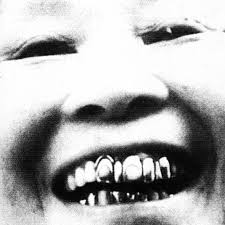To what exactly does the title of SD Laika’s debut album refer to? It’s an act of violence that’s missing a subject. It sounds like a response, but then it’s difficult to think of a context, aside from the most literal, in which it might be spoken. Rather more likely is that it’s intended as a comment on the work itself, but then to what does it equate the ritual from which it takes its name: the act of listening or the process of its creation?
Given the painfully prolonged time taken for these tracks to find release, the latter certainly seems a possibility. That’s Harakiri was recorded by Milwaukee-based producer Peter Runge as far back as 2011 and 2012, only seeing release thanks to Tri Angle’s Robin Carolan. Without his intervention, Runge’s project might have been limited to a single EP, Unknown Vectors put out by Visionists’ Lost Codes label.
It’s partly from this Anglo-American connection that comparisons to grime have stemmed, Visionist himself having contributed a remix to the EP. With ‘That’s Harakiri’ the influence is more implicit, what Runge draws on is the genre’s sensibility rather than its sonics. There are two psychological conditions in particular which grime evokes, paranoia and claustrophobia, both of which are deeply embedded within these tracks. Take ‘Gutter Vibrations’, somewhere between the layers of asphyxiating feedback, spasmodic clicks and other detritus is a dark and twisted take on UK funky. ‘It’s Ritual’ and ‘I Don’t’ are equally disturbing with their booming war drums and percussive artillery – combat internalised as a state of mind.
As with Unknown Vectors, the concept of Runge’s debut seems to be loosely related to theories of the unconscious. Two of the EP’s tracks featured samples from a documentary on American author Henry Miller, who experimented with free association in his writing. ‘Tropic of Cancer’, also the name of one of Miller’s novels, samples him telling an interviewer "I don’t know now whether I’m really awake or dreaming. My whole past seems like one long dream [the sample cuts off here] punctured with nightmares". The very opposite could be said of That’s Harakiri, on tracks like ‘Gutter Vibrations’ and ‘You Were Wrong’ clipped melodies vie with oppressive bass and gunfire percussion like brief lulls in night terrors. For the most part though, this is an album of few contrasts tending towards the latter. ‘Meshes’, with its swarming bassline, maddening steel pans and animal howls is pure id.
One additional means by which we might interpret the title is in the aesthetics of Runge’s productions. There is a kind of minimalism at work here, but minimalism denotes a subtlety and refinement that That’s Harakiri lacks, rather it’s as if these tracks have been cut together by tantō. Runge might be deconstructing grime and UK funky, but unlike peers such as Logos and Filter Dread, he opts to completely saturate his compositions rather than open them up. The latter two make use of silence and echo to situate their productions within space, hence the outer space theme to their track titles and imagery. SD Laika, by comparison, compresses space to the point that That’s Harakiri becomes constricted by its own sheer density; appropriately, the album is suggestive of inner space, one that is seemingly fraught with anxiety. As a result it’s difficult to sustain such energy and tracks seem to be rapidly exhausted, most are less than three minutes. But such are the ideas and impact of them that they linger a lot longer.


